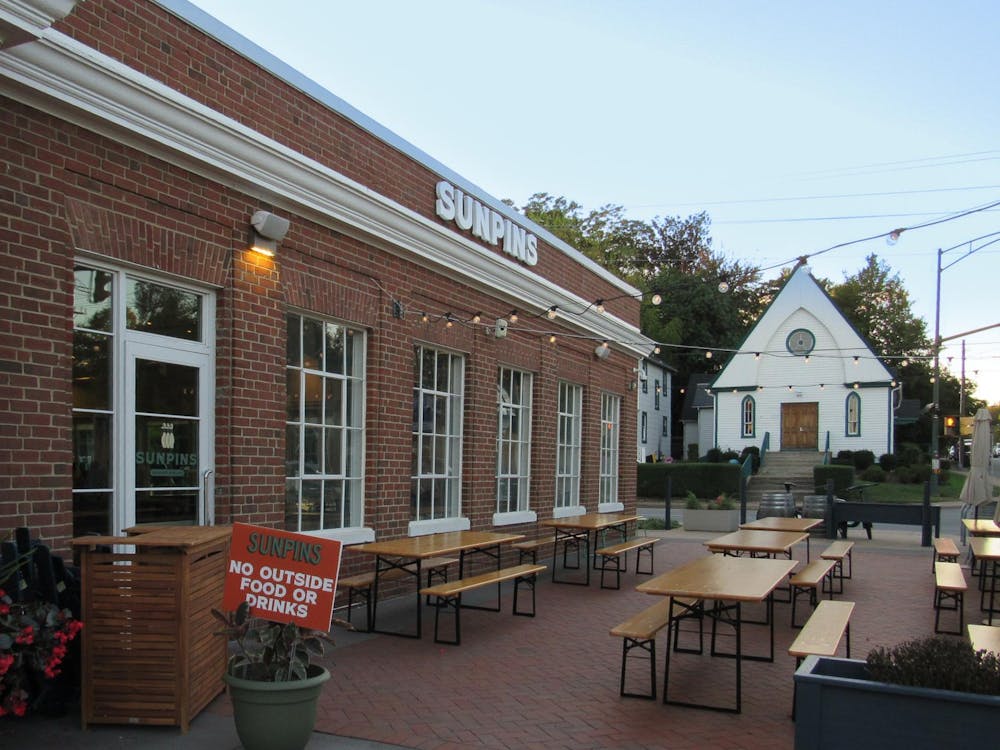Walking through the old wrought iron gates of the University Cemetery on a sunny afternoon in April, students are met with a peaceful calm. A few yards away stands the gravestone of Edwin Anderson Alderman, the first president of the University, for whom Alderman Library is named. In the cemetery, the familiar names of Clemons, Bonnycastle, Tuttle, Minor and Newcomb are all interred next to the McCormick Road dormitories.
The University of Virginia Cemetery was founded in 1828 and is the final resting place for 937 University officials and faculty, as well as their families. The cemetery is partitioned into two sections, one of which is the University Cemetery and the other is a separate Confederate Cemetery. The Confederate Cemetery is the mass gravesite of 1,097 confederate soldiers from 11 states, most of whom died in Charlottesville, according to the Alumni Association. A prominent statue of a Confederate soldier, erected in 1893 as a memorial, stands at the gates of this part of the cemetery inscribed with the words, "Fate denied them victory but crowned them with glorious immortality."
With such historic ties to the times of the Civil War, the Confederate Cemetery connects the University community today with important figures of American history, while the University Cemetery serves as a connection to University history. History Prof. Phyllis Leffler took her first stroll through the cemetery this week, which she said was both beautiful and powerful.
The cemetery "speaks to the depth of history here [by allowing individuals] to see so many of the people who spent their productive lives here" at the University, Leffler said.
Leffler said the choice to be buried in the cemetery showed the extent to which they valued the University during their lives. Leffler, who teaches a course called "History of U.Va. in the 20th century," said her students do not study the University Cemetery.
However, Leffler said she might incorporate the cemetery into her curriculum in the future.
The University Cemetery is known for being the "who's who of University faculty," according to Board of Visitors secretary Sandy Gilliam. One notable man buried at the Cemetery is John A. G. Davis, a former law professor at the University. In 1840, Davis was fatally shot by a student during a student riot on the Lawn. While on his deathbed, Davis famously said an honorable man would come forward, while a dishonorable man would not.
Although no student came forward, the incident sparked the basis for the University's honor system, according to the University Cemetery.
Confederate soldier Carnot Posey was a student at the University before being wounded in battle in 1863. He is buried within the Davis family plot in the University Cemetery. Carnot's friend Dr. John Davis, a descendent of John A. G. Davis, took the wounded soldier into his Pavilion VII home, knocking down the adjacent wall of a Lawn room combining them. Carnot lived in the adjoining Lawn room until he died due to poor medical treatment. In the fall of 2003, the student who occupied the Lawn room Carnot lived in went to visit his grave. To his surprise, fresh flowers were on his stone, and there was no indication of their origin. In recent renovations, the door connecting the two rooms was discovered within the interior wall, according to Gilliam.
Another individual resting in the cemetery, Jesse Wakefield Beams, worked on the Manhattan Project, which produced the first atomic bomb. Gilliam said he remembers seeing armed guards manning an annex off of Rouss Hall as a child and later discovered that Beams had been doing his research there, along with his assistant, Frank Hereford, who became University presiddent and was recently buried at the cemetery.
The list of famous and prominent University figures goes on to include Basil Gildersleeve, who Gilliam speculated might be the greatest American classicist of the 19th century; Paul Brandon Barringer, who founded the University Hospital; seven soldiers who fought in the War of 1812; and four out of the five dead presidents of the University.
Many students are drawn to the cemetery to study or just stroll through because of its serene quality, yet its history is unavoidable. When students find that many of the individuals for which University buildings were named are buried here, interest is sparked.
"It's neat to see all of the grave sights of the people that all of the buildings and dorms were named after," first-year College student Leigh Rayfield said.
Rayfield is a resident of Echols Hall, which is named after William ("Reddy," for his red hair) Echols, Jr., who is buried at the University Cemetery. Echols received two degrees from the University, was later an adjunct professor of mathematics and ultimately was proclaimed the hero of the Rotunda Fire in 1895, when he dynamited part of the structure in order to prevent the fire from spreading, Gilliam said.
Third-year Graduate Arts & Sciences student Alberto Todeschini said he comes to read in the cemetery twice a week in between his classes because he doesn't like the other study areas at the University. Todeschini said cemeteries in his native Italy are completely different. Todeschini said American cemeteries are more like parks with grassy areas, trees and flowers.
"In Italy, you don't go to a cemetery to read a book," Todeschini said.
Although all of the in-ground plots of the cemetery have been purchased already, in 1987, the University Board of Visitors approved the creation of the cemetery's Columbarium, which is a wall where the urns containing the ashes of the dead are stored. There are two memorial walls of the University Columbarium, each wall containing 180 vaults which hold a maximum of four urns each. Individuals qualified to purchase a vault must be a University official, alumnus, professor, retired professor, friends and students of the University (based on service to the institution as determined by the Cemetery Committee) or relatives of any of the eligible candidates. Memorial plaques can also be purchased without the ashes actually being housed in the Columbarium wall.
Today, the Cemetery Committee, chaired by Medicine Prof. Dearing W. Johns, oversees the Columbarium and distinguishes if individuals meet the criteria for a vault.
"The purpose of the cemetery is to have a final resting place for those faculty, students and alumni to whom the University has meant so much," Johns said.






